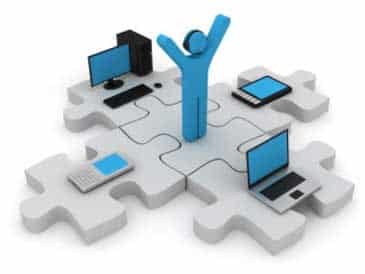
Translation technologies can be put into two categories, firstly there are technologies that increase a translator’s efficiency and secondly those which aim to altogether eliminate the need of a translator. But experience has proved that the role of a certified translator cannot be eliminated entirely. Machine translations are not accurate and subsequently not very reliable. Within the first technology, where the objective is to increase the efficiency of a translator, the effective technology of TM (translation memory) software is used.
We will first see what the TM software does. The translation memory software has a stored memory system which is used by the translators to reuse pre-translated phrases in future assignments. The TM software allows the user to match the phrases of the source language (lets say from English) to the target language (such as Hindi and French). All the previously translated phrases from already translated documents are drawn upon by the TM software, which gives user the option to insert them again wherever he chooses. TM software is very useful in organizations and companies which translate documents in a bulk. It makes the process of translation considerably faster and facilitates the translator to the maximum. Professional translators and translation services companies often use this technology. It is to be noted that TM software is only to enhance a translator’s speed of translating the documents.
TM software is an ideal way to save the precious time of a professional translator. Moreover, it is a useful way to maintain consistency in documents of the same series or type. If a phrase is being repeatedly used in multiple documents, translation memory software ensures that the translation of specific phrases used again and again will have no discrepancies. But as any technology has its drawbacks as well, TM software have its own. The software is expensive and to provide all the employees or translators of the same company with the document, the company will have to spend a fortune. And as is the case with any software, installing it can sometimes raise compatibility issues. Moreover the software is only useful when a considerable record of phrases has been built by the translators which takes time.
Machine translation on the other hand translates automatically without any involvement of a translator. It is an internet based technology. The translations are preset and the user has just to set the source language and the target language in which the text needs to be translated and the website will automatically do that for him. The translations done automatically over the internet are word to word or phrase to phrase in general, so they are unreliable and convoluted. They can tell the general implication of a phrase but machine translation is not contextual or idiomatic. Sometimes the automated translation comes out completely convoluted. Often we come across a phrase or sentence in another language on the internet and we are curious to know what it means. We can take the help of machine translation at such times. Machine translation gives a fair idea of the meaning even though its word to word translation.
But if we required document translation for official use, no mechanized translation will prove useful. People have to hire translation companies to translate their documents for them, adjusting the phrases in the target language so that they would not seem absurd or syntactically incorrect.
